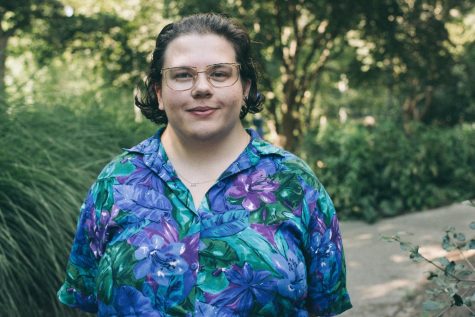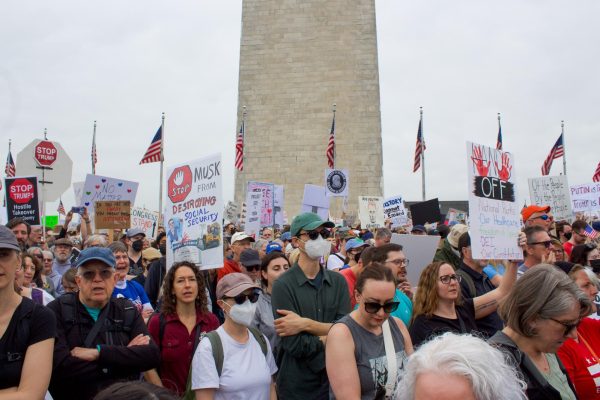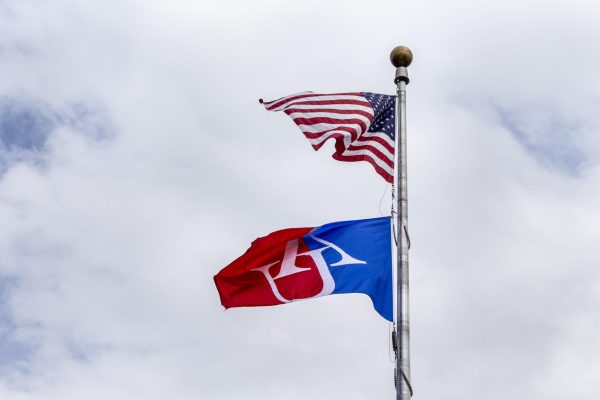Linking Suspension & Incarceration:Cuffing the Kids
It’s the unruly students in the corner of a classroom, the ones who tell fart jokes instead of math answers. Who disobey and talk back to adults. These are the students that teachers rarely know what to do with. They are the ones that will probably be suspended, if they haven’t been already.
In black and brown communities, and in low-income communities especially, these students are disproportionately suspended and expelled from the District of Columbia Public Schools (DCPS) and the District of Columbia Public Charter Schools (PCSB).
“Students have a misconception and they feel unwelcome, and eventually this spirals out of control to the point where we see students in jail,” said District Councilman David Grosso, chairman of the Education Council.
Out of a total enrollment of 77,605 students, there were 18,950 suspensions and expulsions in the 2011-2012 school year alone, according to a 2013 study by DC Lawyers for Youth (DCLY).
Of these suspensions, 70 percent occurred in Wards 7 and 8, where over 90 percent of the population identified as black (non-Hispanic) on the 2010 census. At this rate, black students are 5.86 times more likely to be suspended or expelled than their white peers.
High rates of suspensions and expulsions are main factors of what is known as the “school-to-prison pipeline.”
“The school-to-prison pipeline consists of those policies and practices that pushes youth out of schools and into the criminal or juvenile justice system,” said David Okonkwo, the executive director of DCLY. “It is not just the result of zero tolerance policies, which people like to tote as being the only contributor, but school suspensions for minor offenses and out-of-school suspensions in general.”
Measuring the Pipeline
In the DCLY study, researchers found that 35 percent of suspensions occurred in middle schools. Jefferson Middle School in Ward 6, which had the highest suspension rate, had 382 unique suspensions of 129 students, or 72 percent of its population (some students were suspended more than once). Of the 14 middle schools in the District, only Alice Deal Middle School in Ward 3 suspended less than 20 percent of its population—out of 1,013 students, 74 were temporarily removed for a total of 147 unique suspensions.
DCPS elementary and high schools suspend at a much lower rate than middle schools. High schools suspend an average 22.5 percent of their students, whereas elementary schools suspend an average 5.2 percent of their students, according to the study.
Even in charter schools, middle and high school-aged students are also more likely to be suspended than elementary students. The highest suspension rate for a charter school is at the Maya Angelou Public Charter School in Ward 7. Out of the 210 students, 67 percent, or 140 students were suspended 442 unique times.
While charter schools suspend fewer students compared to public schools, they were responsible for 98 percent of all student expulsions in the District for the 2011-2012 school year. Out of 230 total expulsions in the District, charter schools expelled 227 students.
Because charter schools do not have to disclose the reason for suspensions or expulsions, explanations come only from public school data.
“We have seen students suspended for food fights, being disruptive in class,” Okonkwo said.
The DCPS student handbook breaks down negative student behavior into a five-tier system. The least harmful actions are considered Tier 1 offenses, such as dress code violations, not having required class materials or running through the building. Tier 5 lists the most harmful actions, such as drug distribution, the possession of a weapon or fighting resulting in injury.
Most reported suspensions are Tier 3 violations, which acts as a catch-all tier with 28 possible offenses, from surfing inappropriate websites on school computers to drug and alcohol use.
For offenses in Tiers 1 and 2, school administrations are not able to use off-campus suspensions as punishment. For Tier 3 transgressions, it is up to the administration’s discretion; only Tiers 4 and 5 require off-campus suspensions or expulsion as punishment.
“We decided that no matter how good the attorneys were at representing young people, if they went back to the same communities or went back to a system that wasn’t better off than when they left it, we weren’t having good outcomes for young people.”
Okonkwo said that persistent suspensions and expulsions affect the schools and the communities but, most importantly, the students.
“In terms of how youth think about themselves, there is an effect,” he said. “If you are in a place where kids are being taken out of school for any number of things, there is no stable environment to let them feel protected and safe. When that happens, it is not a place that they want to go to.”
Hugs, Not the Hand
For Okonkwo, DCLY is one of the answers to unfair treatment of disadvantaged students in the District.
In 2007, he, along with nine other graduates of Georgetown University’s Juvenile Justice Clinic, opened DCLY with the goal of making “the DC juvenile justice system the best and smallest for students.”
In other words, their mission is to create a juvenile system in the District that keeps students from cyclically moving within the justice system, and streamlining the system so only those who need it use it.
“We decided that no matter how good the attorneys were at representing young people, if they went back to the same communities or went back to a system that wasn’t better off than when they left it, we weren’t having good outcomes for young people,” Okonkwo said. “We wanted to start an organization that really worked on reform for DC’s juvenile justice system so it is one that is rehabilitative, not punitive.”
DCLY created the Every Student Every Day Coalition to help combat the school-to-prison pipeline. The Coalition unites researchers, DCPS service providers, advocacy groups and individuals who, according to their website, are working to organize and engage communities where school disengagement is a problem, to “educate them about systematic trends and empower them to advocate for reform through a variety of channels.”
Its work has had positive effects in the community. Over the past five years, the juvenile justice system shrunk by 30 percent, becoming more streamlined. As activists and coalition builders advocate for the District to implement more community-based programming, more services have been added for young people, reducing recidivism.
“Ideally we want to be able to get rid of almost all secured detention for young people, and have them at home in their communities getting services from local service providers, where their families can take part in their rehabilitation,” Okonkwo said.
As a result of these staggering suspension and expulsion figures, Grosso has worked extensively to correct the school-to-prison pipeline.
“Especially in the African American community, there is a real understanding in the neighborhoods that the school-to-prison pipeline is real and that we have to do everything we can do remove it and dismantle it,” Grosso said. “And the way to do this is by these real deliberate steps on how we change the paradigm of discipline and making school welcoming. We should be giving kids hugs and not the hand.”
When he was first elected in 2013, Grosso introduced the Pre-K Student Discipline Amendment Act of 2015. The bill, which passed unanimously, prohibits the suspensions and expulsions of pre-kindergarten students in all District schools unless the student does or threatens to physically harm another student, not in self-defense.
“When I did this, people came to me really upset, especially teachers, because they did not have the tools they needed to not suspend and expel,” Grosso said. “There has not been a strong emphasis on teachers getting the tools and training for students out of control.”
He has since implemented a task force investigating the intersectionality of why students are being suspended and expelled and the mental health problems they are facing.
“The reality is that we are all learning this together,” Grosso said. “We are coming to the realization that mental health services and adversity care in these schools are the way to handle these situations.”
Addressing Mental Health
Christina Henderson, the Education Committee Director, has spearheaded the task force. She has been meeting with different organizations that work in schools to see how they can work together to aid schools more effectively.
“There is a hodgepodge of things happening in schools, and these different organizations hadn’t really come together to have conversations,” Henderson said.
She is working with the Wendt Center, Turnaround for Children, Children’s Law Center, inSite solutions and the Rand Center to come up with a five-step solution to aid in the mental health and trauma intersections of the school-to-prison pipeline.
The coalition is currently talking about what can be done within the limits of next year’s DCPS school budget while looking at the schools they operate in to see if there is overlap.
They also want to obtain and utilize district-wide data on toxic stress and trauma that students currently face. Ideally, this assessment would coincide with hearing and vision screenings, in an attempt to normalize mental health stigmas that are predominant in many communities.
“Students, if you really dig down in their issues, they have adversity in their lives, they are dealing with trauma, with depression or other mental issues, they are dealing with poverty on a daily basis,” Grosso said. “These things are important to recognize. Once you identify that these things are happening, how do we put the resources in these schools to get them in a better position to learn?”
The coalition hopes to pilot a feeder pattern program throughout DCPS that aids in screening and treating mental health from pre-kindergarten through high school, ensuring all aspects of students’ mental health are addressed.
“DC provides a very interesting opportunity because we are big, but we are also small, and there is a lot of focus on us because we are the nation’s capitol so we feel like if we are able to accomplish here, it will be very easy for other places to make the case for why they need the aid,” Henderson said.
In the end, Grosso believes that building better communities and a better city requires breaking the cyclic nature of the school-to-prison pipeline.
“If you don’t have a warm nurturing environment in school where everyone has a fair shot of making it, and everyone is in the best position to succeed, then what happens is that students end up in trouble and fall through the cracks.”

Senior studying journalism and computer science. Has been known to cry over Chicago. I'm really interested in figuring out how journalism can be used as...










